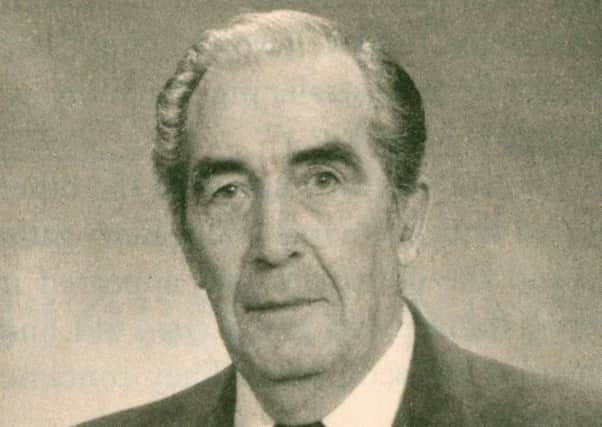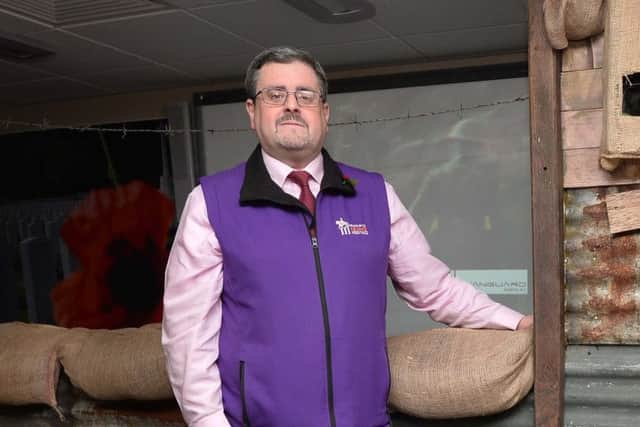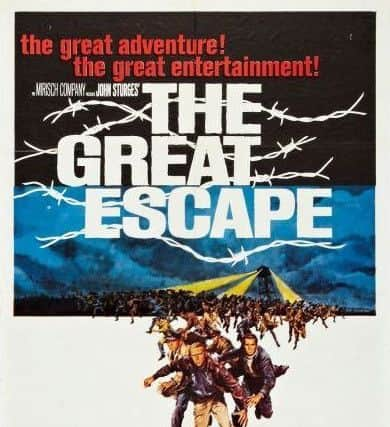Great Escape 75th anniversary: Orangeman played key role in German POW camp break out


Clarke Wallace Floody, who was born on April 28, 1918 in Chatham, Ontario, came from a long line of Canadian Imperial Orangemen.
Jonathan Mattison of the Orange Museum and Heritage Centre was able to shed more light on the story of this extraordinary Orangeman who was shot down and captured by Germans while serving in the Royal Canadian Air Force in 1941.
Advertisement
Hide AdAdvertisement
Hide AdHis mining experience meant he was one of the main designers of the three escape tunnels though he was not actually part of the March 1944 escape itself.


He said: “Wallace Floody, like his father and many generations before him, was a member of the Imperial LOL 2767 in Toronto.
“Because his family was so involved in the Orange Order he was named after a very prominent Orangeman in Canada who was the grand master at the end of the 19th century – a man called Nathaniel Clarke Wallace.
“As the story goes he was Christened or baptised on the Twelfth of July and the water used is supposed to have come from the River Boyne.”
Advertisement
Hide AdAdvertisement
Hide AdIn 1939 Wallace, also known as Wally, signed up for the Royal Canadian Air Force. He was assigned to 401 Squadron, but in 1941 was shot down and captured, eventually being sent to Stalag Luft III in Poland.


Mr Mattison said: “He’d been a miner in his youth. His skills became very important as the escape organisation was set up by squadron leader Roger Bushell.
“They dug three tunnels (named Tom, Dick and Harry) simultaneously. Wallace’s experience in the mines was key to that. He was one of the main designers and diggers of the tunnels.”
Asked of Floody’s Ulster roots, Mr Mattison said: “We haven’t gone back as far maybe as we could but certainly his grandfather or great grandfather was heavily involved in the Orange Order in Canada in the 1830s and lived in Enniskillen, Ontario.
Advertisement
Hide AdAdvertisement
Hide Ad“After that we haven’t joined the dots to see the links with Ulster but given the huge numbers that went to Canada and United States from the 18th century onwards it’s not inconceivable that there would be links to here.”
In the Great Escape film the character of Tunnel King Danny Velinski played by Charles Bronson is loosely based on Wallace Flood.
The 1963 film is based on Paul Brickhill’s book of the same name – a firsthand account of the mass escape by British Commonwealth prisoners from German POW camp Stalag Luft III in Poland.
Its stars include Steve McQueen, James Garner, Richard Attenborough, Charles Bronson and Donald Pleasence.
Advertisement
Hide AdAdvertisement
Hide AdThe film deviates from actual events in some aspects, one being that Americans were introduced to the camp even though none had been held there.
Orange historian Jonathan Mattison said: “In the film Wallace’s character played by Charles Bronson is Polish.
“He was the main digger in the film (nicknamed Tunnel King).
“Wallace was the technical advisor to the director on the film. Bronson in his early life had been a miner, I think they probably struck a chord.
Advertisement
Hide AdAdvertisement
Hide Ad“Bronson’s character escapes in the film but in reality Wallace was moved to another camp down the road before the actual escape date.
“The Germans became aware something was going on and moved 20 prisoners. I think it was actually because Wallace was looking very pale, he hadn’t seen sunlight because he’d been down in the tunnels for so long.
“That move may well have saved his life because after the Great Escape, Hitler ordered that 50 of the escapees be executed by the Gestapo.”
Of the 76 men who escaped, 73 were re-captured and of those 50 were killed on Adolf Hitler’s instruction.
Advertisement
Hide AdAdvertisement
Hide AdOn September 22, 1946 Wallace Floody was made member of the Order of the British Empire.
After the war he was extremely active in veteran’s affairs.
He died on September 25, 1989.
A book about Wallace Floody’s life called The Tunnel King was published in 2004.